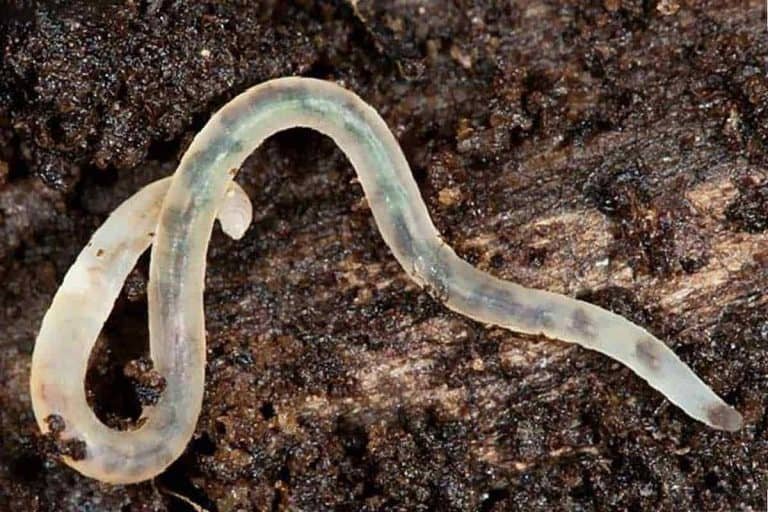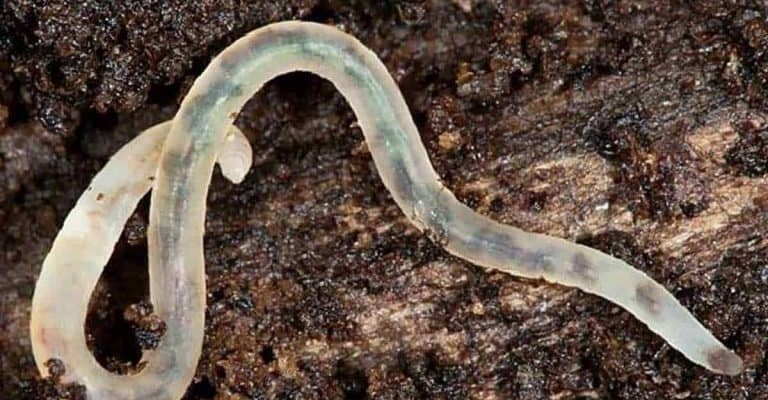
Studying or farming Grindal worms can seem daunting, especially if you’re not familiar with worm husbandry. However, these worms can thrive in captivity with the right care. They’re like the unsung heroes of the live food world, offering an excellent food source for your fish and even some reptiles. In this article, we’ll explore how you can raise Grindal worms, the benefits of keeping them, and how they could fit into your pet care routine.
What Are Grindal Worms?
Grindal worms, or Enchytraeus buchholzi, are tiny, white worms that reach about 1 to 3 inches in length. They thrive in moist environments and prefer a substrate rich in organic material. Think of them as the kitchen composters of the worm world—great for breaking down waste while providing an excellent food source for your aquatic pets.
These worms are a bit different from the more commonly known bloodworms or mealworms. While those worms can be larger and tougher, Grindal worms are soft and squishy, making them easier for smaller fish to eat. They offer a much gentler diet, perfect for fry or smaller species that might struggle with larger food.
Grindal worms multiply quickly under the right conditions. A few worms can turn into a thriving culture in just a few weeks, which is why they’re so appealing for hobbyists and researchers alike. You might be wondering how to set up your own culture to enjoy a constant supply of these nutritious live foods.
Setting Up Your Grindal Worm Culture
Getting started with Grindal worms isn’t rocket science, but there are a few key steps to ensure your worms thrive. Here’s a simple guide to setting up your culture:
1. Choose the Right Container:
A plastic bin or glass jar works well. The container should have some depth, ideally 6 to 12 inches, to give the worms room to move and reproduce. Make sure it has breathable holes to allow airflow.
2. Prepare the Substrate:
You can use a mixture of moist peat moss, coconut coir, and soil. The substrate should be damp but not soggy. Too much water can drown the worms, while too little can dry them out. Think of it like a sponge—moist but not dripping.
3. Introduce the Worms:
Once your substrate is set, add your starter culture of Grindal worms. You can buy them online or from local fish stores. Just a few worms can lead to a flourishing population if they’re comfortable in their new home.
4. Feed Them:
To keep your worms growing, provide them with a food source. Grindal worms enjoy oatmeal, yeast, and even vegetable scraps. You can sprinkle a small amount of food on the surface every few days. Just keep an eye on it—if it starts looking moldy, it’s time to remove it.
Caring for Your Grindal Worms
Once you’ve set up your culture, ongoing care is essential for keeping your Grindal worms healthy and productive. Here are some tips:
Temperature Preferences:
Grindal worms prefer a temperature of 60 to 75°F (15 to 24°C). Too hot or too cold can stress them out. A temperature-sensitive thermometer in the room can help monitor these conditions.
Humidity Levels:
Keep the substrate moist but not overly saturated. You might need to spray it with water occasionally, especially if you notice it drying out. This soggy sponge analogy comes in handy again—maintain a good balance!
Harvesting Worms:
After a few weeks, your worms will have multiplied. Use a small net or fine mesh to scoop out what you need. It’s a little like fishing for bait! Just be careful not to disturb the entire culture, so it continues to thrive.
Benefits of Farming Grindal Worms
So, why bother with Grindal worms? Here are a few benefits that might sway you:
1. Nutritional Value:
Grindal worms are rich in protein, fat, and essential vitamins. When you feed them to fish or reptiles, you’re giving them high-quality nutrition that can promote better health and vibrant colors.
2. Easy to Culture:
Unlike some other live foods, Grindal worms are easy to care for. They don’t take up much space and can thrive in a variety of conditions. Whether you’re a seasoned aquarist or a beginner, you’ll find that keeping these worms is a manageable task.
3. Sustainable Live Food Source:
By raising your own Grindal worms, you create a continuous supply. This reduces the need to constantly buy commercial live foods, which can be more expensive and less sustainable. Plus, you’ll know exactly how they were raised!
Challenges You Might Face
Even though Grindal worms are generally easy to care for, some challenges could arise. Here are a few to watch out for:
1. Overfeeding:
It’s easy to overdo it on the food. Too much can lead to mold or attract unwanted pests. A better approach is to start small and gradually increase the amount based on how quickly it disappears.
2. Temperature Fluctuations:
As mentioned, Grindal worms like specific temperature ranges. It’s wise to keep your culture in a stable environment. If it’s too hot, you might notice them becoming sluggish, or if it’s too cold, they may slow down or stop reproducing.
3. Contamination:
Sometimes, other pests like fruit flies or mites can invade your culture. If that happens, take action immediately. You can remove the upper layer of the substrate and replace it with fresh materials to help combat the issue.
Applications in Research and Study
Grindal worms aren’t just a delicious treat for your fish; they also have study potential in various fields:
1. Feeding Studies:
Researchers can use Grindal worms to study the nutritional needs of different fish species. They’re an ideal live food for testing feeding behaviors and dietary preferences.
2. Environmental Studies:
These worms can also serve as bioindicators. Because they thrive in specific conditions, scientists can study their populations to assess environmental health.
3. Aquaculture:
There’s growing interest in using Grindal worms in aquaculture. As the demand for sustainable fish farming increases, these worms provide an easy way to produce live feed that is nutritious and easy to grow.
Final Thoughts on Grindal Worms
Grindal worms present a unique opportunity for those interested in sustainable feeding options for their pets. They’re *easy to culture*, *nutrient-rich*, and *beneficial for aquatic ecosystems*. Whether you’re farming them for your fish or studying them in a scientific context, there’s a lot to love about these little guys.
By setting up your own culture, you can enjoy the satisfaction of providing fresh, live food while contributing to a healthier aquatic habitat. So, why not give Grindal worms a shot? You might find that they’re not just beneficial—they’re also a fun addition to your home!

